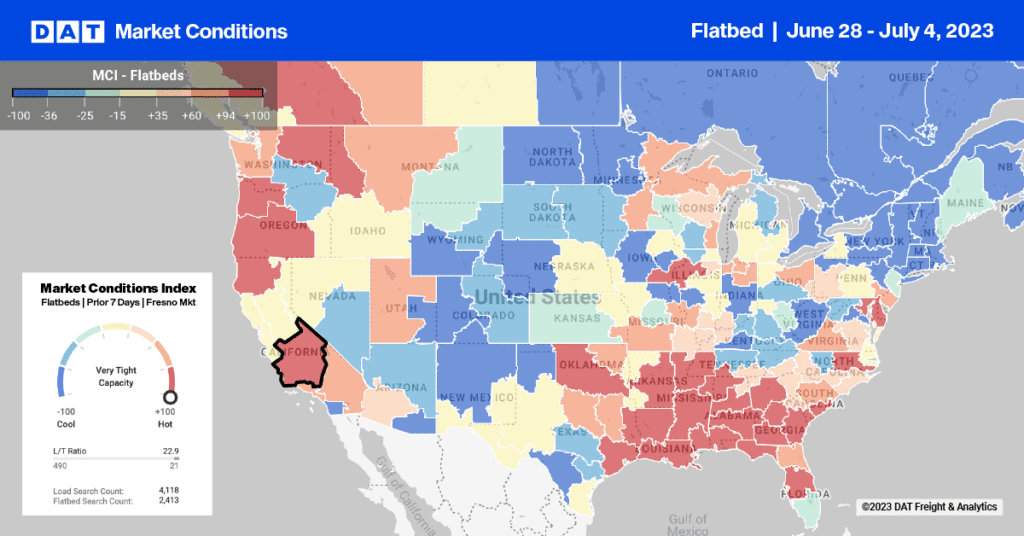Freight brokers achieved record load volume and revenue in January, resulting in a slim, but positive net operating profit that is unusual for the season.
The record revenue was fueled by a 41% increase in the number of loads moved, with 26% more revenue per load, compared to January 2017. Costs rose faster than revenues, however, adding 70% to labor expense and 24% to non-labor expense, as freight brokers invested in personnel and technology to prepare for business growth.
Spot market rates soared to record highs in January, and the national average rates paid by brokers exceeded shipper-direct contract rates for all three equipment types. As a result of the rapid increase in the cost of purchased transportation, the brokers’ gross margins dropped to an average of 12.1%. That compares favorably with the 11.2% gross margin in January 2017, but margins were considerably higher in the intervening months.
This benchmark report is administered by DAT Keypoint, and draws data from an aggregate of more than 100 DAT customers, whose 2017 average annual revenue of $19.5 million grew 26% compared to 2016. To receive monthly updates in your inbox, subscribe to the DAT Broker Benchmark Report.

Net operating profits for the group rebounded into positive territory in January 2018, rising to 7.4% of net revenue due primarily to revenue growth. January has not been a profitable month for freight brokers in recent years, but rates were unusually high this year, and some companies may have deferred profits from December to January to take advantage of the new tax laws. Apart from the operating profit, 67% of January’s net revenue went to labor costs, while 23% went to non-labor expense, and 2.8% covered interest, taxes, depreciation and amortization.

Expenses climbed throughout 2017, as freight brokerage companies in the group invested in personnel and technology to manage expected revenue growth. Some brokers chose to accelerate expenses for payment in December, to achieve more favorable results under 2017 tax laws. During 2017, labor expenses (blue) grew faster than non-labor expenses (gray) in dollar terms and as a percentage of net revenue.


